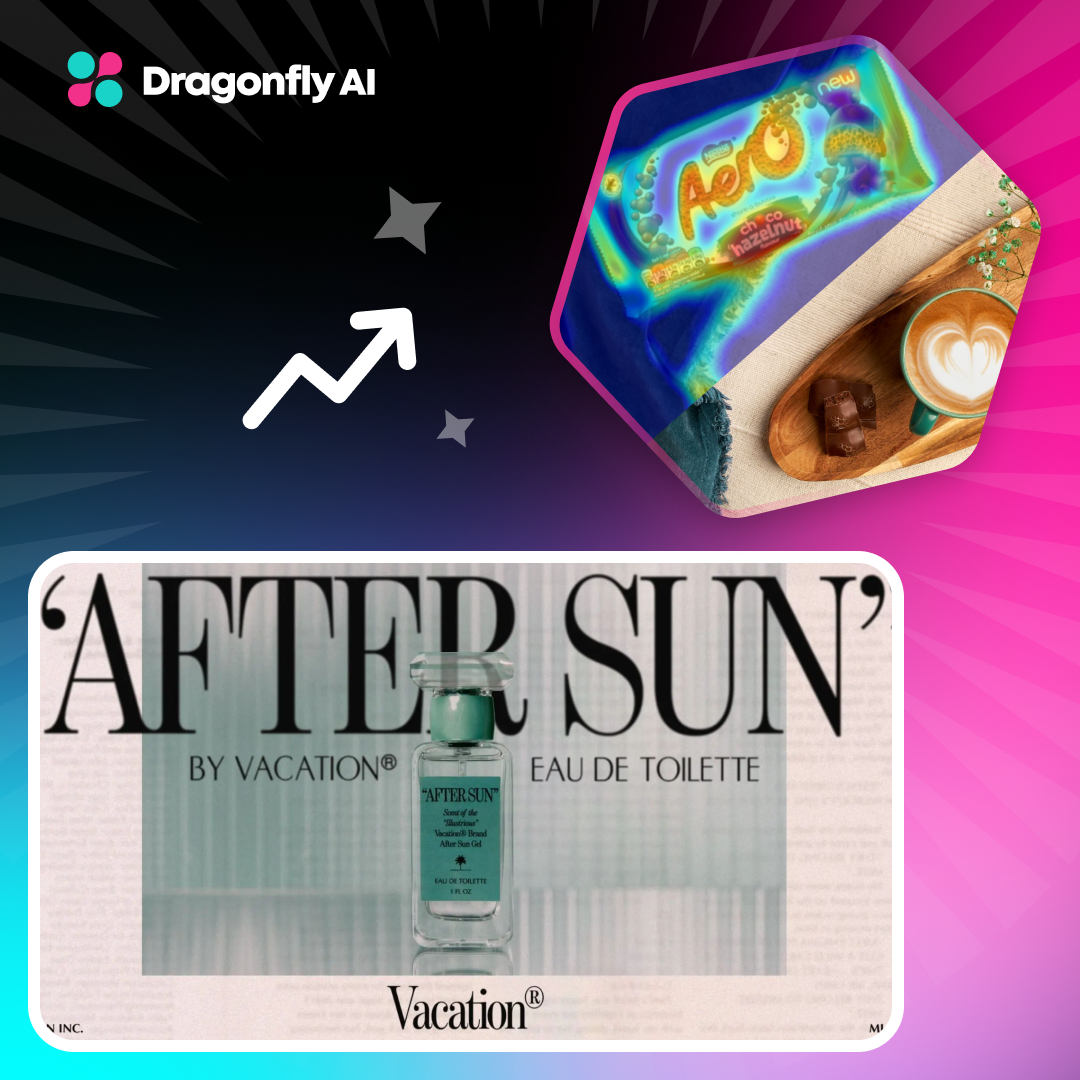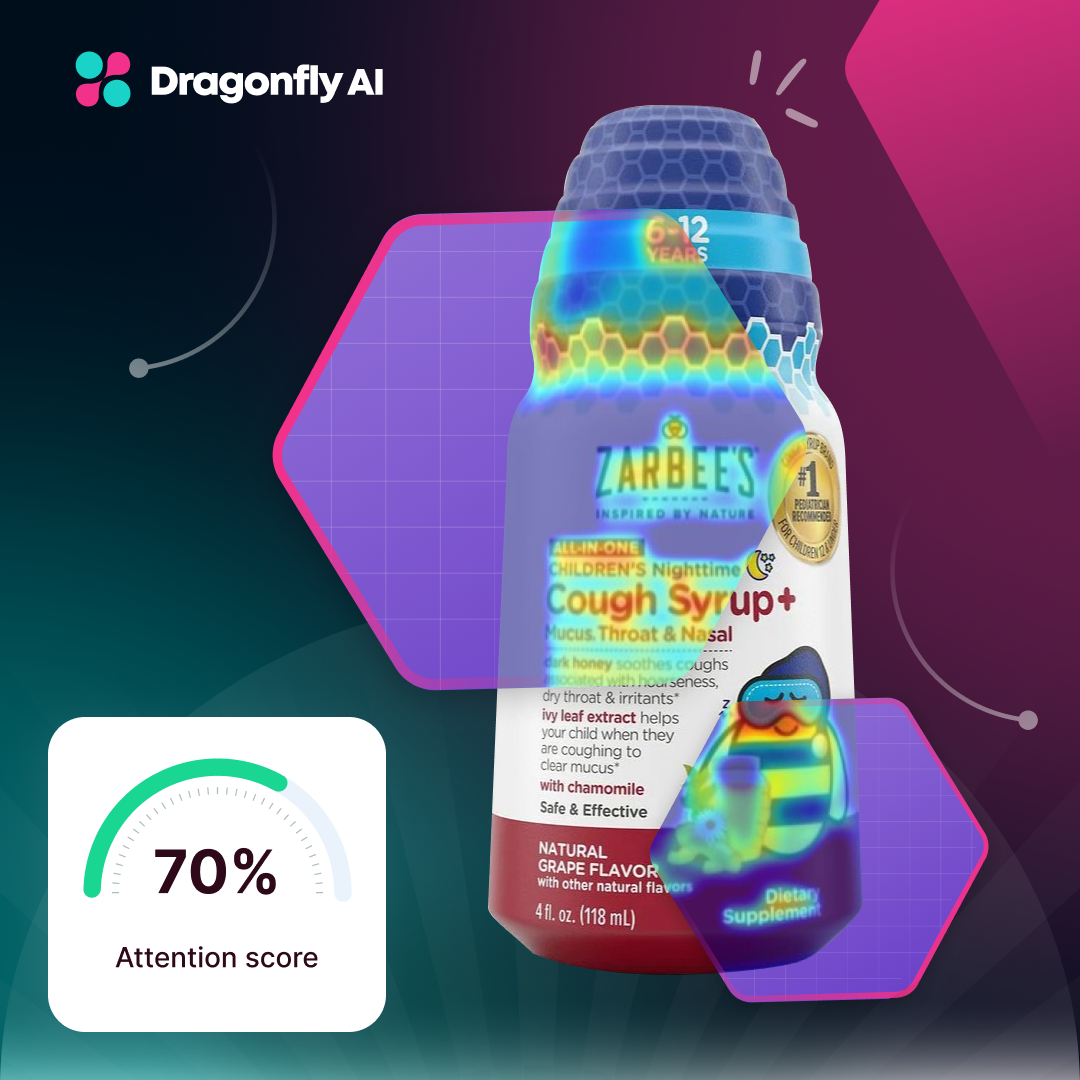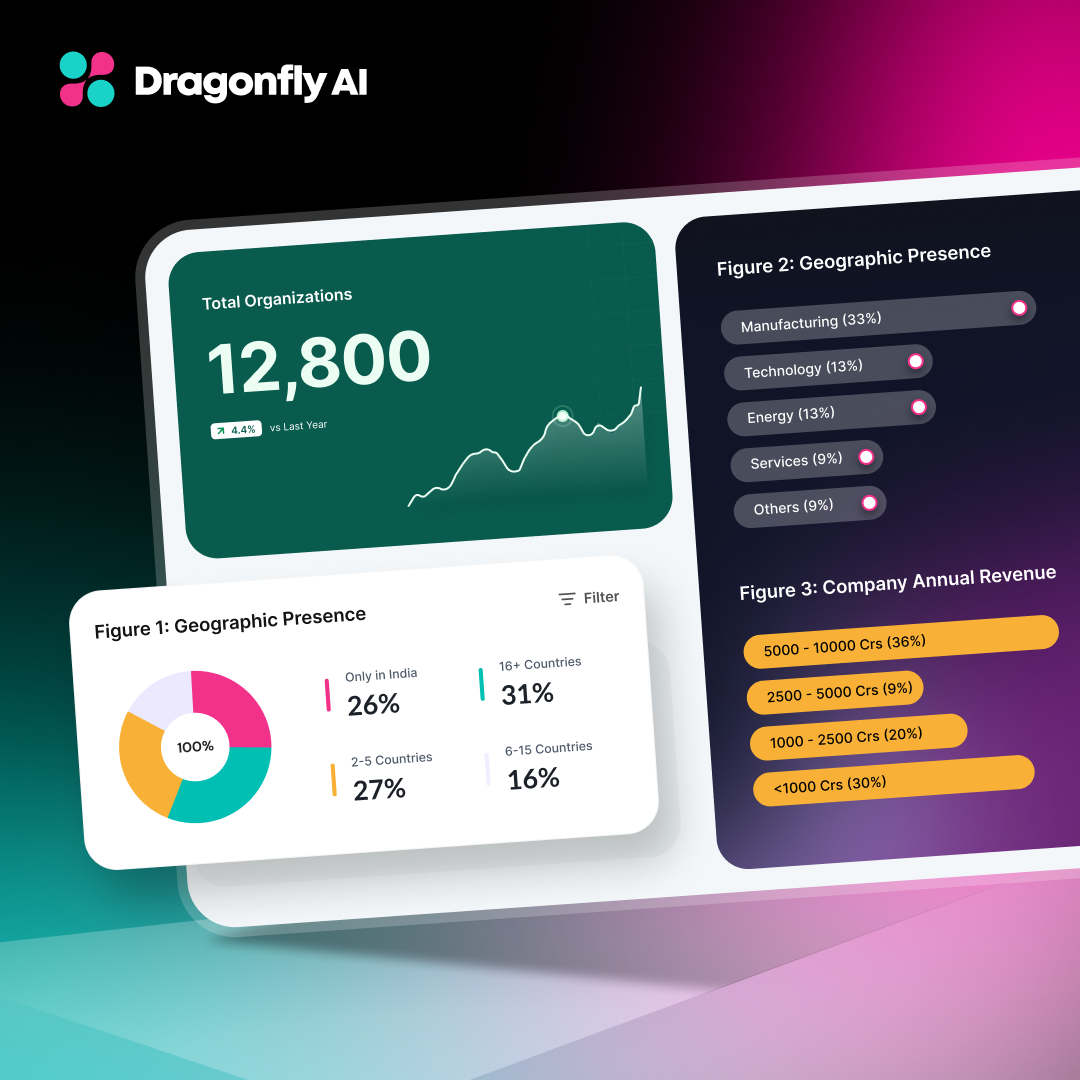Dragonfly AI is a predictive analytics platform designed to help you improve the quality and effectiveness of your content across any format, channel and market.
What is Technology Integration? Exploring Its Role in AI-Driven Creative Effectiveness
77% of marketers are planning to increase their artificial intelligence (AI) usage. But 59% of organizations are finding integrating technology systems a significant challenge.
Technology integration is the process of connecting your tech stack and aligning it with your marketing goals to craft engaging, impactful campaigns and track results. By merging creativity with these tools, creative teams can enhance designs, personalize content, deliver targeted messaging, and ultimately drive higher engagement and conversions.
Inspiration and Idea Generation
Have you ever been stuck trying to think of an idea? AI can be treated as your brainstorming partner.
AI accelerates the analysis of vast amounts of data, identifying patterns, and making unexpected connections, so a creative isn’t bogged down by research. Empowering them to maximize their full creative potential to spark new ideas and develop unique concepts.
Content Creation and Exploration
AI can also be your creative assistant, helping you find the right image or write the right text. AI-powered tools can generate content like images, audio, or copy to save you time or give you a better idea of what you want to create.
Collaboration and Refinement
AI can act as a collaborator, suggesting edits or variations that can help refine a creative vision.
This can be particularly useful in fields like graphic design, where AI can analyze design principles and suggest tweaks to improve user experience or aesthetics.
Performance and Analytics
Now, you are at the point where you need to track how your creative performed. AI can help automate analytics tracking. The benefits of combining AI with a fully integrated tech stack is so it can help you track and measure the performance of creatives through multiple channels in a comprehensive view.
Overall, an AI integration enhances creative effectiveness by:
- Boosting efficiency: AI automates repetitive tasks, freeing up creatives to focus on higher-level thinking and execution.
- Breaking creative blocks: AI provides new perspectives and ideas, helping overcome creative roadblocks.
- Expanding creative horizons: AI allows for exploration of concepts and styles that might not have been considered before.
- Enhances data-driven designs: Ai can perform research on market trends, best practices, and competitive analysis to develop design strategies that are backed by data.
Understanding Technology Integration
51% of marketing professionals indicate that marketing technology will be a significant area they plan on increasing investment in. If you plan on adding new technology, then you should understand the impacts of not having an integrated tech stack:
- A lack of data visibility from fragmented and inconsistent data makes it harder to track performance, identify opportunities, optimize strategies, and get the ROI on your investments
- Decreased workflow efficiency from bottlenecks and repetitive tasks lead to workforce burnout, lower productivity, and weakened performance
- Siloed information leads to inadequate communication and project delays
.png?width=1280&height=700&name=Blog%20Image%201%20(21).png)
When it comes to marketing and design, integrated technology solutions involve connecting various tools and platforms to develop seamless, streamlined workflow.
Here's a breakdown of different categories and examples:
Content Creation and Management
Integrating media solutions for streamlining the creation, storage, and distribution of content.Examples include:
- Content creation suite: Combining design tools with asset management tools to unify workflows and improve efficiency.
- Content management system (CMS) with your website: Integrating website building tools with your content management system, allows creating and managing content directly on your website.
- Digital asset management (DAM) with marketing automation: DAM systems can integrate with marketing email or social media tools to streamline the distribution of pre-designed marketing materials.
Data Analysis and Insights
Integrating tools that collect, analyze, and visualize data to gain valuable customer insights.
Examples Include:
- Customer Relationship Management Systems with website analytics: Integrating a CRM with Google Analytics provides a 360-degree view of customer interactions, both online and offline.
- Social media management platforms with social listening tools: Some social media tools can connect with social listening tools to analyze brand sentiment and track competitor activity to help improve creative strategies.
- Marketing automation with data visualization tools: Marketing automation platforms can integrate with data visualization tools to create interactive reports that track campaign performance.
Collaboration and Project Management: Category
Integrating tools that facilitate communication, task management, and project tracking between marketing and design teams.
Examples Include:
1. Project management platform with communication tools: Project management platforms can integrate with organizational communication tools to offer a central hub for project tasks, discussions, and file sharing.
2. Creative feedback platforms with project management tools: Allow designers to share work, receive feedback, and track revisions seamlessly within a centralized tool.
3. Cloud storage with design collaboration tools: Cloud storage services can integrate with design collaboration tools, enabling real-time collaboration on design projects.
Marketing Automation and Personalization:
Integrating tools that automate marketing tasks and personalize customer experiences.
Examples Include:
- Marketing automation with CRM: Marketing automation platforms can integrate with CRMs to automate personalized email sequences based on customer data and buying behavior.
- CMS with personalization tools: Some CMS platforms offer built-in personalization tools that allow for tailored website content and offers to individual customer segments.
- Advertising platforms with customer data platforms (CDPs): Platforms like Meta can connect with CDPs to target specific customer segments based on unified data profiles.
- Programmatic advertising with AI audience targeting: Leverage platforms that utilize AI-powered programmatic advertising. This combination can reach highly targeted consumer segments with laser focus, maximizing campaign reach, return on ad spend (ROAS), and brand awareness for your organization.
Customer Experience and Buyers Journey
Integrate tools that optimize the shopper journey both online and in-store.
Examples Include:
- Shopper Journey Optimization: Integrate AI tools to address different touchpoints in the consumer journey. This could involve AI-powered chatbots for customer service, AI-driven recommendations based on purchase history, or targeted in-store promotions based on location data.
- Enhance In-Store Experiences: Use AI to create data-driven displays and promotions that personalize the in-store experience for products. This can involve dynamic pricing based on demand or creating interactive displays that showcase product information and usage examples, influencing purchasing decisions at the point of sale.
The Role of AI in Creative Effectiveness
The realm of AI is expanding beyond inspiration and content creation.
Imagine what you could do if you could predict the future.
Predictive AI is revolutionizing the creative landscape with its capabilities of anticipating audience preferences and market trends. This allows marketers and creatives to further personalize content, campaigns, and experiences with impeccable accuracy.
-1.png?width=1280&height=700&name=Blog%20image%202%20(20)-1.png)
You can use AI to predict which elements of a new ad campaign will resonate the most with your target demographic. Predictive AI enables creatives to focus on concepts with a higher chance of success, optimizing the creative process and maximizing outcomes.
There is a wide range of use cases for predictive AI in creative endeavors. It can be used to predict what kind of product packaging will catch a consumer's eye on a crowded shelf or forecast which social media content formats will generate the most engagement. As predictive AI continues to evolve, its role in shaping creative strategies and driving organizational success will only become more evident.
Here's how AI is enhancing creative processes, decision-making, and ultimately, the quality of outputs:
Inspire and Explore:
- Breaking Creative Blocks: AI uses existing data to generate unique ideas and concepts that can jumpstart a creative project or help overcome creative roadblocks. Pretend a marketer struggling to determine a campaign name; AI can analyze existing campaigns and suggest a list of names.
- Expanding Creative Horizons: AI can explore vast creative spaces that humans might not consider. From generating new concepts based on existing ideas to creating entirely new visual styles or images, the creative possibilities of AI are endless. Allowing creatives to break free from conventional thinking and explore uncharted creative territories.
Data-Driven Decision Making:
- Predicting Audience Preferences: Predictive AI can analyze vast amounts of audience data to understand preferences and anticipate trends. This allows creatives to make data-driven decisions about content, style, and messaging, ensuring their creations resonate with their target audience. Pretend you are creating a website; AI can analyze user behavior data to suggest layouts and designs that will enhance the user experience.
- Optimizing Creative Iterations: AI can analyze multiple creative variations and predict which ones are likely to perform better. This allows creatives to focus their efforts on the ideas most likely to succeed and avoid wasting time on dead ends. For example, your advertising team needs to develop a social media campaign; AI can analyze different ad copy variations and predict which ones will generate the most clicks.
Enhanced Creative Outcomes:
- Improved Efficiency: AI automates repetitive tasks like content tagging, image editing, or music composition, freeing up creative’s time to focus to execute on higher-level projects.
- Greater Consistency and Quality: AI can ensure consistent quality across a large volume of creative content. This is particularly valuable for tasks like product design or social media content creation, where maintaining brand identity is crucial.
Case Studies of AI-Driven Creative Effectiveness
Those were just a few of the advantages of using AI, now let’s dive into some real-life success stories of utilizing integrated AI technology.
Coca-Cola's Personalized Holiday Magic:
Coca-Cola wanted to create a personalized holiday campaign that resonates with a broader, more diverse audience. Coca-Cola leveraged innovative AI-powered content creation that analyzes vast amounts of customer data, including purchasing history and social media interactions. Using this data, AI then generated personalized marketing content, such as social media posts and video ads, tailored to individual preferences.
Over 120,000 pieces of original artwork were produced using infamous creative assets from the Coca-Cola archives. This campaign gave Coca-Cola a significant boost in engagement. Users loved the personalized experience and were excited to share their images, provoking many to feel a stronger connection to the Coca-Cola brand.
.png?width=1280&height=700&name=Blog%20image%203%20(19).png)
Unilever's AI-Powered Packaging Design:
Unilever wanted to expedite the food production process, so they used AI to revolutionize and launch several new products including, Knorr Zero Salt Cube, Hellmann’s Vegan Mayonnaise and the innovative Squeeze Bottle.
Unilever also leverages AI to evaluate shelf life, texture, and taste. All while forecasting the product’s performance potential based on consumer preferences.
This innovative technology is taking Unilever to the next level, helping them develop packaging for a new line of personal care products that will stand out against the crowd and appeal to their ideal customer.
Going one step further Unilever leverages an AI-enabled recycling system to automatically pick and sort plastic to reduce waste, helping them reach their environmental and sustainability goals.
-1.png?width=1280&height=700&name=Blog%20image%204%20(5)-1.png)
Technology Integration Strategies
Some of the top challenges marketers face when implementing and integrating AI tools are:
Integrating AI with existing systems
One of the most common problems marketing teams face is trying to integrate their existing tools. Depending on the tool, there can be significant resources and technical expertise required which can delay integration and time to adopt.
Another integration hurdle can be if one system doesn’t support another tools integration. Either way, having too many disconnected tools can result in spending too much time on mundane, time-consuming tasks.
Lack of quality data
You may be familiar with the saying “garbage in, garbage out”. With dispersed systems, it is difficult to maintain your data hygiene. Fragmented tech stacks can hamper data visibility, which can also delay integration time since teams are concerned with starting an AI implementation without knowing the state of their data.
Understanding and Trusting AI
AI is relevantly new and is still learning so there is some skepticism from organizations. AI tools are typically transparent with their limitations so do your due diligence to be aware of the tool's extent of knowledge.
1. Privacy and Compliance ConcernsNearly 60% of marketing teams are concerned with an AI tool’s level of data security and privacy. Especially since failure to comply with regulations can result in fees, legal action, data breaches, and damages to a brand’s reputation.
2. Concerns with Lack of AI Adoption
68% of marketers believe that AI development is heading in the right direction but there are some constraints around adoption and using it effectively. Since there are preconceived notions around AI, marketing leaders are not sure how to make the business case for AI solutions or are worried that there will be a lack of adoption, resulting in little to no ROI.
Here are actionable strategies for you to overcome these challenges:
- Choose the right AI tool
- Thoroughly assess the AI technology you are interested in investing, make sure it:
- Integrates with your existing technology stack
- Does not require heavy lifting or too many resources from your team
- Meets the data privacy and compliance requirements
- Make sure your data is updated or can be updated using the new solution
- Understand the tool’s limitations and use cases
- To successfully integrate AI, it is important to effectively communicate the limitations and use cases to the users to maximize performance.
- Identify an internal champion to educate on AI and ignite the excitement and opportunities that can come from using the new tools.
If you consider the following and use these best practices, it should help you identify the right AI tool to integrate into your technology stack.
Define Your Goals
Clearly define your goals to identify areas that technology can improve the
most.
Pinpoint Your Biggest Challenges
Focus on what the main challenge is and how you can overcome those
challenges to integrate your tech stack or solve those challenges with AI.
Continuously add and give feedback
AI uses data so it is important to maintain data health and encourage
users to give feedback so the tools can learn and improve.
Communicate the Value to Users and Encourage Collaboration
Foster a culture of learning by relaying the benefits to users early on, along with the training and resources they need to utilize the new solutions effectively.
Measure and Refine
Track your performance to continuously monitor the impact of your integrated technology solutions. Use data analytics to track key metrics, identify areas for improvement, and refine your approach to maximize the return on your investment (ROI).
Evolving Technologies
The marketing landscape is undergoing a transformative shift, fueled by the ever-evolving power of AI. Here's a breakdown of emerging AI tools and innovative integration trends that are poised to redefine creative marketing:
The Creative Potential of AI Tools:
Creative Intelligence Platforms: A/B test your creatives, track gaze paths on your ads, test performance in context, all from your desktop. Collaborate with your team. Studio provides an immersive testing environment with real time results and in-depth analysis of your creative.Use an AI-powered creative intelligence and optimization platform such as Dragonfly AI that helps enhance the ease of collaboration and performance of your creatives, improving the ROI, speed, and efficiency of your design workflows for optimal results.
Emotionally Intelligent Content Creation: AI is moving beyond content generation towards understanding and catering to the emotional nuances of target audiences. This could involve AI creating images that evoke specific emotions or writing ad copy that resonates with the audience's deepest desires. Imagine AI analyzing social media sentiment to create content that not only captures viewers attention but sparks emotional connections with your audience.
Personalized Storytelling with Generative AI: Hyper-personalization is the future of marketing. Generative AI will allow for the creation of highly personalized experiences, from custom product recommendations to interactive narratives that adapt to individual user preferences. Imagine an AI creating a personalized website experience that dynamically adjusts content and visuals based on a user's historic and real-time interactions.
By strategically connecting your tech stack and harnessing the power of AI, you can unlock a new era of creative marketing proficiency.
Build Better Creative Effectiveness with Technology
Integrated technology enables seamless workflows, eliminates data silos, and empowers data-driven decision-making. Here's a quick recap of some of the key benefits:
- Enhance Efficiency and Performance: Automate repetitive tasks, freeing up creative minds to focus on strategic thinking and innovation.
- Streamline Collaboration and Automate Workflows: Break down information barriers, facilitate cohesive teamwork across marketing and creative teams, and automate mundane tasks to improve productivity and performance.
- Gain Deeper Customer Insights: Gain a unified view of customer data, enabling hyper-personalization and targeted messaging.
- Data-Driven Optimization: Track performance across channels, measure the impact of creative decisions, and continuously refine campaigns for maximum ROI.
Embrace Technology to Unleash Your Creative Potential
With AI, it doesn’t have to be a guessing game. If you aren’t using AI and other innovative integrated technology solutions, you can lose your competitive edge. Don't be left behind! You can transform your tech stack into a creative powerhouse, leveling up your team with the latest technology to craft compelling campaigns, deliver exceptional customer experiences, and achieve quantifiable results with tools that hold your hand every step of the way!
have you conducted eye tracking
studies or interviews before?
other topics


